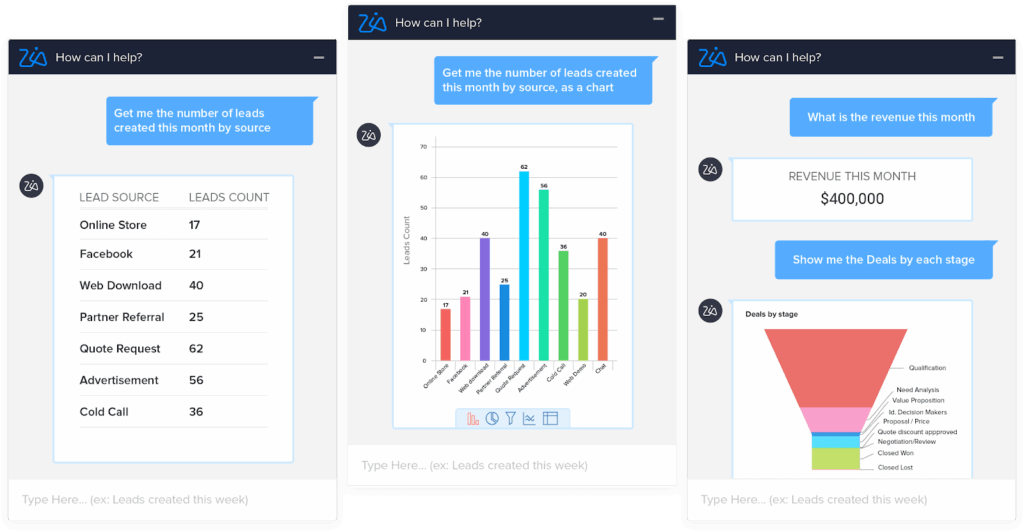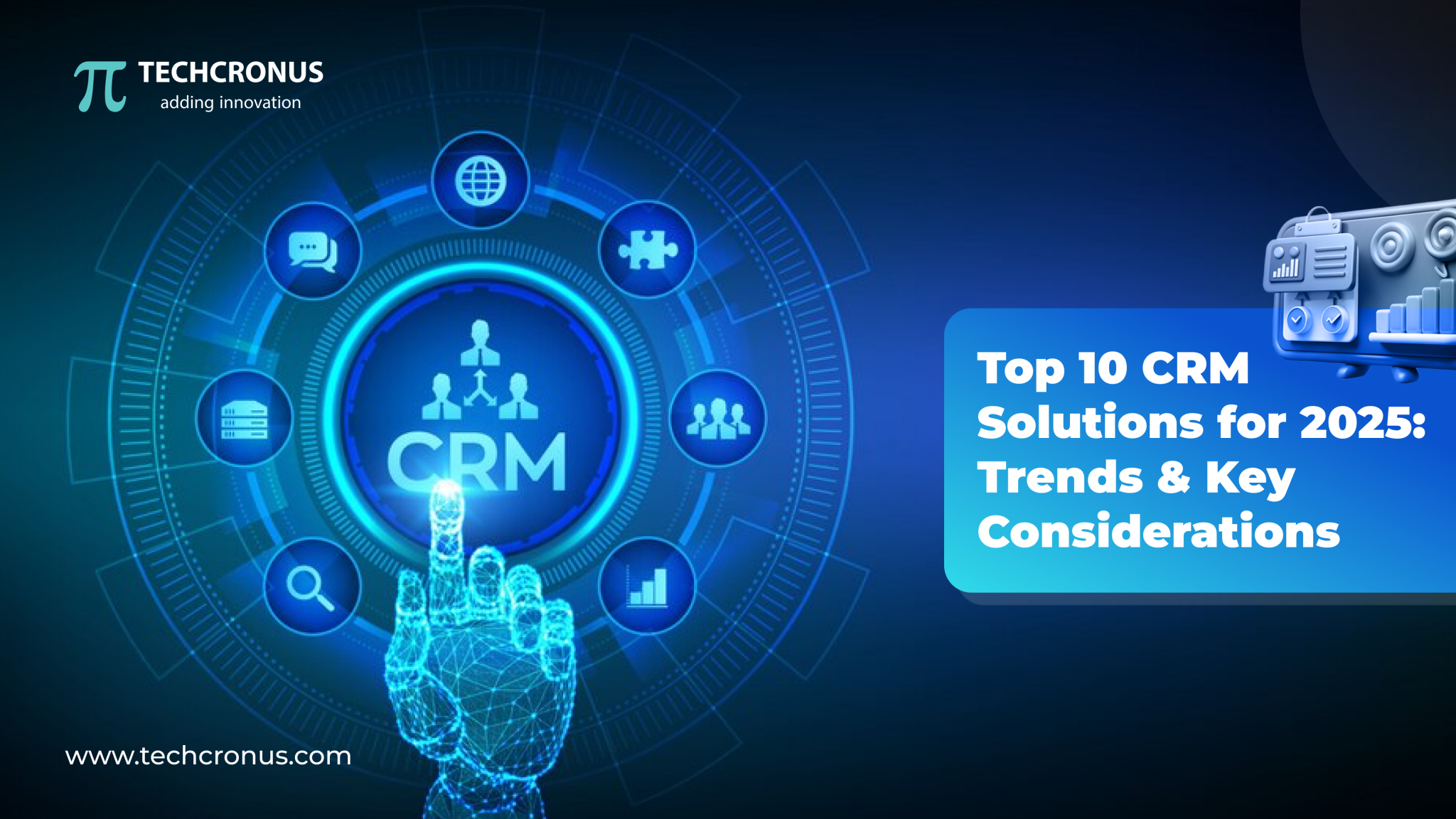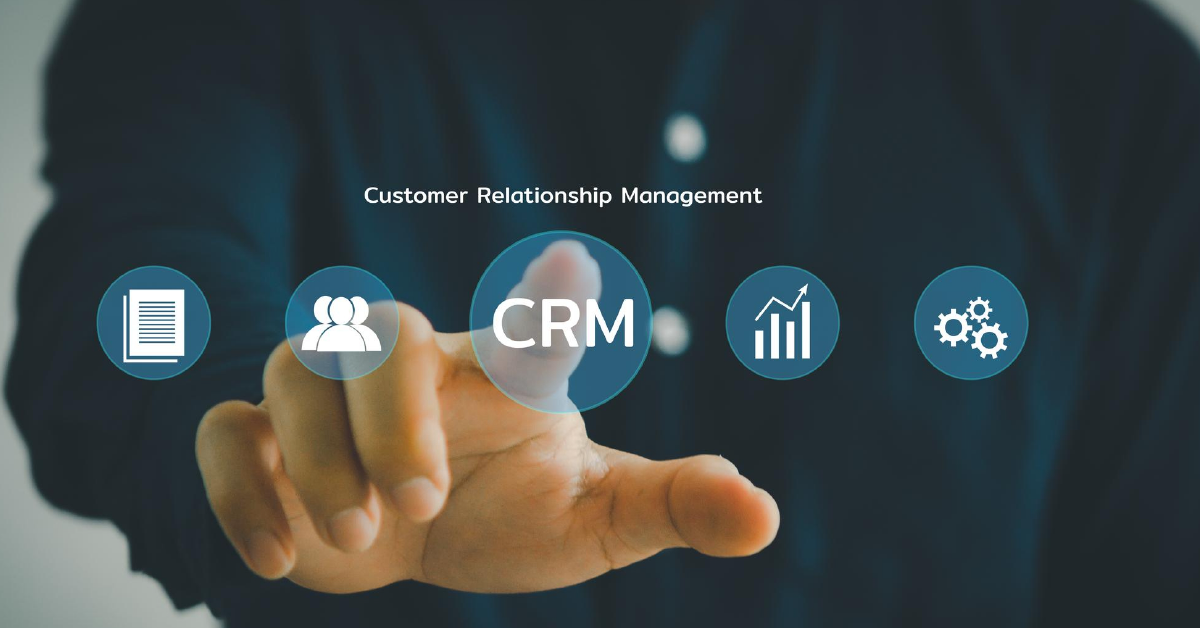
Unlocking Growth: Why CRM is a Game-Changer for Small Businesses
Running a small business is a whirlwind. You’re juggling a thousand things – from product development and marketing to customer service and financial management. In the midst of this, it’s easy for customer relationships to get lost in the shuffle. That’s where a Customer Relationship Management (CRM) system steps in, becoming your secret weapon for sustained growth. CRM isn’t just for the big guys anymore; it’s a vital tool for small businesses looking to thrive in today’s competitive landscape.
This comprehensive guide delves into the world of CRM, specifically tailored for small businesses. We’ll explore what CRM is, why it’s essential, the benefits it offers, and how to choose and implement the right system for your unique needs. By the end of this article, you’ll have a clear understanding of how CRM can transform your business, improve customer relationships, boost sales, and ultimately, fuel your growth.
What Exactly is CRM? Demystifying the Acronym
CRM, at its core, is a technology that helps you manage all your interactions with current and potential customers. Think of it as a centralized hub for all your customer-related information. It’s more than just a contact list; it’s a complete picture of your customer journey, from initial contact to purchase and beyond. It encompasses all the ways you interact with your customers, including:
- Contact Management: Storing and organizing customer contact information, including names, addresses, phone numbers, and email addresses.
- Interaction Tracking: Recording every interaction you have with a customer, such as emails, phone calls, meetings, and social media engagement.
- Sales Automation: Streamlining your sales processes, from lead generation and qualification to closing deals.
- Marketing Automation: Automating marketing tasks, such as email campaigns, social media posting, and lead nurturing.
- Customer Service Management: Providing excellent customer service by tracking issues, resolving complaints, and managing support tickets.
- Analytics and Reporting: Providing insights into your customer data, sales performance, and marketing effectiveness through reports and dashboards.
Essentially, CRM allows you to understand your customers better, personalize your interactions, and provide exceptional service. This leads to increased customer satisfaction, loyalty, and ultimately, revenue. It’s about building stronger relationships, and that’s what drives long-term success.
The Compelling Reasons Why Small Businesses Need CRM
In the past, CRM systems were often seen as complex and expensive tools reserved for large corporations. However, with the advent of cloud-based CRM solutions, the playing field has leveled. Today, small businesses can access affordable and user-friendly CRM systems that can revolutionize their operations. Here’s why CRM is no longer a luxury, but a necessity for small business growth:
1. Enhanced Customer Relationships
At the heart of any successful business are strong customer relationships. CRM enables you to:
- Personalize Interactions: Accessing a complete customer history allows you to tailor your communication and offer relevant products or services.
- Improve Customer Service: Quickly access customer information to address inquiries and resolve issues efficiently.
- Build Loyalty: Provide consistent and personalized experiences that keep customers coming back.
By understanding your customers’ needs and preferences, you can build stronger relationships that drive customer loyalty and advocacy. Happy customers are the best form of marketing.
2. Increased Sales and Revenue
A well-implemented CRM system can significantly boost your sales performance. It helps you:
- Manage Leads Effectively: Track and nurture leads through the sales pipeline, ensuring no opportunity is missed.
- Automate Sales Processes: Automate repetitive tasks, freeing up your sales team to focus on closing deals.
- Improve Sales Forecasting: Gain insights into your sales pipeline and predict future revenue with greater accuracy.
- Identify Upselling and Cross-selling Opportunities: Analyze customer data to identify opportunities to sell additional products or services.
By streamlining your sales process and empowering your sales team, CRM can lead to a significant increase in sales and revenue.
3. Improved Efficiency and Productivity
CRM helps streamline your business operations and improve overall efficiency. It can:
- Automate Tasks: Automate repetitive tasks, such as sending emails, scheduling appointments, and generating reports.
- Centralize Information: Store all customer information in one central location, making it easy for your team to access the data they need.
- Reduce Manual Errors: Minimize errors associated with manual data entry and management.
- Improve Collaboration: Facilitate collaboration between different departments, such as sales, marketing, and customer service.
By automating tasks and centralizing information, CRM frees up your team to focus on more strategic initiatives, leading to increased productivity and efficiency.
4. Data-Driven Decision Making
CRM systems provide valuable insights into your customer data and business performance. They allow you to:
- Track Key Metrics: Monitor key performance indicators (KPIs), such as sales revenue, customer acquisition cost, and customer lifetime value.
- Generate Reports: Generate custom reports to analyze your sales, marketing, and customer service performance.
- Identify Trends: Identify trends and patterns in your customer data to make informed decisions.
- Improve Marketing ROI: Track the effectiveness of your marketing campaigns and optimize your spending.
By providing data-driven insights, CRM empowers you to make informed decisions and optimize your business strategies.
5. Better Customer Retention
Customer retention is critical for the long-term success of any business. CRM helps you:
- Track Customer Interactions: Keep track of all customer interactions, including support tickets, complaints, and feedback.
- Identify At-Risk Customers: Identify customers who may be at risk of churning and take proactive steps to retain them.
- Personalize Communications: Send personalized communications to customers based on their preferences and purchase history.
- Provide Excellent Customer Service: Provide exceptional customer service to build loyalty and encourage repeat business.
By improving customer retention, CRM helps you reduce customer churn and increase your customer lifetime value.
Choosing the Right CRM System for Your Small Business
Selecting the right CRM system is crucial for its successful implementation and adoption. With a plethora of options available, it’s essential to choose a system that aligns with your business needs, budget, and technical capabilities. Here’s a step-by-step guide to help you choose the perfect CRM for your small business:
1. Assess Your Needs
Before you start evaluating CRM systems, take the time to assess your business needs. Consider the following:
- What are your business goals? What do you want to achieve with CRM? (e.g., increase sales, improve customer service, automate marketing)
- What are your current pain points? What challenges are you facing in managing customer relationships?
- What features do you need? Make a list of the essential features you need, such as contact management, sales automation, and marketing automation.
- Who will be using the CRM? Consider the needs of your different teams (sales, marketing, customer service) and how they will use the system.
- What is your budget? Determine how much you are willing to spend on a CRM system.
Answering these questions will help you narrow down your options and choose a system that meets your specific requirements.
2. Research CRM Vendors
Once you have a clear understanding of your needs, start researching CRM vendors. Consider the following:
- Cloud-based vs. On-premise: Cloud-based CRM systems are generally more affordable and easier to implement than on-premise systems.
- Features and Functionality: Evaluate the features and functionality of each system to ensure it meets your needs.
- Ease of Use: Choose a system that is user-friendly and easy to learn.
- Integration Capabilities: Consider the system’s ability to integrate with other tools you use, such as email marketing platforms, accounting software, and social media platforms.
- Pricing: Compare the pricing plans of different vendors and choose a plan that fits your budget.
- Reviews and Ratings: Read reviews and ratings from other small businesses to get an idea of the system’s strengths and weaknesses.
Some popular CRM options for small businesses include:
- HubSpot CRM: A free, all-in-one CRM with powerful features for sales, marketing, and customer service.
- Zoho CRM: A comprehensive CRM with a wide range of features and integrations, suitable for businesses of all sizes.
- Salesforce Sales Cloud: A leading CRM platform with a vast array of features and customization options, though it can be more complex.
- Pipedrive: A sales-focused CRM designed for simplicity and ease of use.
- Freshsales: A sales CRM with integrated phone, email, and chat functionality.
3. Consider Scalability
Choose a CRM system that can grow with your business. As your business expands, you’ll need a system that can handle increased data volume and user accounts. Consider the following:
- Storage Capacity: Ensure the system has sufficient storage capacity to accommodate your growing data needs.
- User Limits: Check the number of users the system supports and whether it can accommodate your future growth.
- Customization Options: Choose a system that offers customization options to tailor it to your evolving business needs.
- Integrations: Ensure the system can integrate with other tools you may need in the future.
4. Demo and Trial
Before making a final decision, request demos and free trials of the CRM systems you’re considering. This will allow you to:
- Experience the user interface: Get a feel for how easy the system is to use.
- Test the features: Try out the features that are most important to your business.
- Evaluate the performance: Assess the system’s speed and reliability.
- Get feedback from your team: Involve your team in the trial process to gather their feedback and ensure the system meets their needs.
This hands-on experience will help you make an informed decision and choose the right CRM system for your business.
5. Pricing and Support
Carefully review the pricing plans of each CRM system. Consider the following:
- Subscription Fees: Understand the monthly or annual fees associated with each plan.
- Features Included: Determine which features are included in each plan and whether they meet your needs.
- Hidden Costs: Be aware of any potential hidden costs, such as implementation fees or training costs.
- Customer Support: Evaluate the level of customer support provided by each vendor, including availability, response times, and support channels.
Choosing a CRM system that fits your budget and provides adequate support is essential for a successful implementation.
Implementing CRM in Your Small Business: A Step-by-Step Guide
Once you’ve chosen your CRM system, the real work begins: implementation. Successful implementation is crucial for realizing the full benefits of your CRM investment. Here’s a step-by-step guide to help you implement your CRM system effectively:
1. Planning and Preparation
Before you start implementing your CRM system, take the time to plan and prepare. This includes:
- Defining your goals: Clearly define your objectives for using the CRM system. What do you want to achieve?
- Identifying your data sources: Determine where your customer data is currently stored (e.g., spreadsheets, contact lists).
- Cleaning and organizing your data: Clean and organize your data to ensure accuracy and consistency.
- Assigning roles and responsibilities: Assign roles and responsibilities to your team members for the implementation process.
- Creating a project timeline: Develop a realistic timeline for the implementation process.
Thorough planning and preparation will help you avoid common pitfalls and ensure a smooth implementation process.
2. Data Migration
Migrating your existing customer data into the CRM system is a critical step. Here’s how to do it effectively:
- Back up your data: Before migrating your data, back it up to prevent data loss.
- Choose a migration method: Determine the best method for migrating your data (e.g., manual entry, CSV import, data migration tools).
- Map your data fields: Map your existing data fields to the corresponding fields in the CRM system.
- Import your data: Import your data into the CRM system.
- Verify your data: Verify that your data has been migrated correctly.
Accurate data migration is essential for ensuring the CRM system provides accurate and reliable information.
3. Customization and Configuration
Customize and configure your CRM system to meet your specific business needs. This may include:
- Customizing fields and layouts: Customize the fields and layouts to display the information you need.
- Setting up workflows: Set up automated workflows to streamline your business processes.
- Integrating with other tools: Integrate your CRM system with other tools, such as email marketing platforms and accounting software.
- Configuring user roles and permissions: Configure user roles and permissions to control access to data and features.
Customization and configuration will help you tailor the CRM system to your unique business requirements.
4. Training and Adoption
Training your team on how to use the CRM system is crucial for its successful adoption. Here’s how to ensure effective training and adoption:
- Develop a training plan: Create a training plan that covers all aspects of the CRM system.
- Provide hands-on training: Provide hands-on training to your team members.
- Create training materials: Develop training materials, such as user guides and video tutorials.
- Encourage adoption: Encourage your team to use the CRM system and provide ongoing support.
- Monitor and evaluate adoption: Monitor and evaluate the adoption rate and make adjustments as needed.
Effective training and ongoing support will help your team embrace the CRM system and realize its full potential.
5. Ongoing Management and Optimization
Implementing a CRM system is not a one-time task; it’s an ongoing process. Here’s how to manage and optimize your CRM system over time:
- Monitor data quality: Regularly monitor the quality of your data and take steps to improve it.
- Analyze performance: Analyze your CRM data to track key metrics and identify areas for improvement.
- Update and maintain the system: Regularly update and maintain the CRM system to ensure it’s running smoothly.
- Seek feedback from users: Seek feedback from your team members to identify areas for improvement.
- Stay up-to-date on CRM best practices: Stay up-to-date on the latest CRM best practices to optimize your use of the system.
Ongoing management and optimization will ensure that your CRM system continues to deliver value and support your business growth.
Maximizing CRM for Small Business Growth: Best Practices
To truly unlock the power of CRM for your small business, it’s important to implement best practices. These practices will help you get the most out of your CRM system and drive sustainable growth:
1. Define Clear Goals and Objectives
Before you start using your CRM, clearly define your goals and objectives. What do you want to achieve with the system? Are you aiming to increase sales, improve customer service, or automate marketing? Having clear goals will help you:
- Focus your efforts: Align your CRM activities with your business goals.
- Measure your success: Track your progress and measure your results.
- Make data-driven decisions: Use your CRM data to make informed decisions.
By setting clear goals, you can ensure that your CRM is aligned with your overall business strategy.
2. Implement a User-Friendly System
Choose a CRM system that is easy to use and intuitive. A user-friendly system will encourage your team to use it regularly, leading to better data quality and improved adoption rates. Consider the following:
- Intuitive interface: Choose a system with a clean and easy-to-navigate interface.
- Mobile accessibility: Ensure the system is accessible on mobile devices so your team can access it on the go.
- Customization options: Customize the system to meet your team’s needs and preferences.
- Training and support: Provide comprehensive training and ongoing support to help your team learn and use the system effectively.
A user-friendly system will make it easier for your team to adopt and use the CRM, leading to better results.
3. Focus on Data Quality
The quality of your data is critical to the success of your CRM system. Inaccurate or incomplete data will lead to poor decisions and wasted resources. To ensure data quality, consider the following:
- Data entry standards: Establish data entry standards to ensure consistency and accuracy.
- Data validation: Use data validation tools to prevent errors.
- Regular data cleansing: Regularly clean and update your data to remove duplicates and outdated information.
- Data security: Implement data security measures to protect your data from unauthorized access.
By focusing on data quality, you can ensure that your CRM system provides accurate and reliable information.
4. Integrate with Other Tools
Integrate your CRM system with other tools you use, such as email marketing platforms, accounting software, and social media platforms. This will help you:
- Automate your workflows: Automate repetitive tasks and streamline your business processes.
- Gain a 360-degree view of your customers: Access a comprehensive view of your customer data from all sources.
- Improve collaboration: Improve collaboration between different departments.
- Increase efficiency: Save time and improve efficiency.
By integrating your CRM with other tools, you can create a more efficient and effective business environment.
5. Train Your Team
Provide comprehensive training to your team on how to use the CRM system. Training will help your team:
- Understand the system’s features: Learn how to use all the features of the CRM system.
- Enter data accurately: Learn how to enter data accurately and consistently.
- Use the system effectively: Learn how to use the system to achieve their goals.
- Adopt the system quickly: Adopt the system quickly and seamlessly.
Ongoing training and support will ensure that your team is able to use the CRM system effectively and achieve their goals.
6. Analyze and Optimize
Regularly analyze your CRM data to track key metrics and identify areas for improvement. This will help you:
- Measure your results: Track your progress and measure your results.
- Identify areas for improvement: Identify areas where you can improve your CRM processes.
- Make data-driven decisions: Use your CRM data to make informed decisions.
- Optimize your CRM strategy: Optimize your CRM strategy to achieve your goals.
By analyzing and optimizing your CRM data, you can ensure that your CRM system is delivering the best possible results.
The Future of CRM in Small Business
The future of CRM for small businesses is bright, with exciting advancements on the horizon. As technology continues to evolve, CRM systems will become even more powerful, user-friendly, and integrated. Here’s a glimpse into the future:
1. Artificial Intelligence (AI) and Machine Learning (ML)
AI and ML are poised to revolutionize CRM by:
- Predictive Analytics: Predicting customer behavior, identifying sales opportunities, and forecasting future revenue.
- Personalized Recommendations: Providing personalized product recommendations and tailored marketing messages.
- Automated Tasks: Automating repetitive tasks, such as data entry and email responses, freeing up valuable time.
- Improved Customer Service: Using chatbots and virtual assistants to provide instant support and resolve customer issues.
AI and ML will empower small businesses to gain deeper insights into their customers, personalize their interactions, and optimize their operations.
2. Enhanced Automation
Automation will continue to play a crucial role in CRM, with advancements in:
- Workflow Automation: Automating more complex workflows, such as lead nurturing and sales processes.
- Marketing Automation: Automating more sophisticated marketing campaigns, including personalized email sequences and social media posting.
- Customer Service Automation: Automating customer service tasks, such as ticket routing and issue resolution.
Enhanced automation will help small businesses streamline their operations, improve efficiency, and free up resources to focus on strategic initiatives.
3. Increased Integration
CRM systems will become even more integrated with other business tools, including:
- E-commerce Platforms: Seamless integration with e-commerce platforms to track customer purchases and personalize marketing efforts.
- Social Media Platforms: Deeper integration with social media platforms to monitor social media activity, engage with customers, and track social media performance.
- Communication Tools: Integration with communication tools, such as phone systems and video conferencing platforms, to streamline communication and collaboration.
Increased integration will enable small businesses to gain a more holistic view of their customers and provide a more seamless customer experience.
4. Mobile-First Approach
CRM systems will increasingly adopt a mobile-first approach, with:
- Mobile-Optimized Interfaces: Designing interfaces that are optimized for mobile devices, making it easy for users to access and manage data on the go.
- Mobile CRM Apps: Developing dedicated mobile CRM apps that offer enhanced features and functionality.
- Real-Time Data Access: Providing real-time access to customer data from any device, enabling users to stay connected and informed.
A mobile-first approach will empower small businesses to stay connected with their customers and manage their operations from anywhere.
5. Focus on Customer Experience
The future of CRM will be centered around providing exceptional customer experiences. This will involve:
- Personalized Interactions: Providing personalized interactions based on customer preferences and purchase history.
- Proactive Customer Service: Proactively addressing customer needs and providing support before issues arise.
- Seamless Omnichannel Experience: Providing a seamless customer experience across all channels, including email, phone, social media, and in-person interactions.
By focusing on customer experience, small businesses can build stronger relationships, increase customer loyalty, and drive sustainable growth.
Conclusion: Embracing CRM for a Thriving Small Business
In conclusion, CRM is no longer a luxury; it’s a necessity for small businesses that aspire to thrive in today’s competitive market. By embracing CRM, you can build stronger customer relationships, increase sales and revenue, improve efficiency, and make data-driven decisions. Remember to choose the right CRM system for your needs, implement it effectively, and follow best practices to maximize its potential. The future of CRM is bright, with exciting advancements on the horizon that will further empower small businesses to connect with their customers, personalize their interactions, and drive sustainable growth. Start your CRM journey today and unlock the full potential of your small business.


